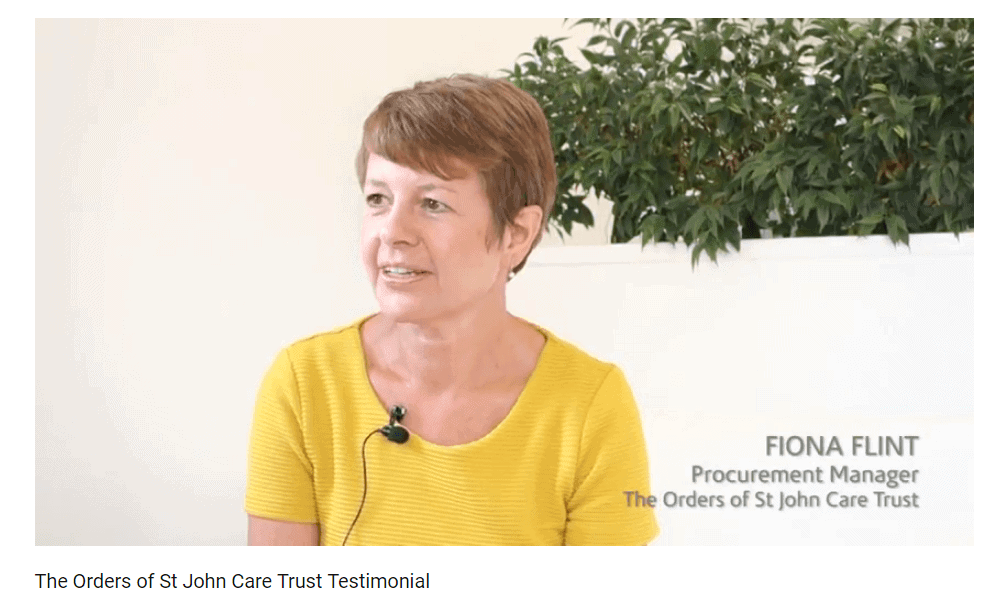As we embark in 2018, it’s time to identify the trends that lie ahead for healthcare marketers. The healthcare sector is evolving and marketers who can analyze the trends and prepare for the future, have the best chances of setting their companies up for success. However, before we begin to predict this year’s trends, let’s take a quick look at what trends dominated healthcare marketing in 2017.
Interested in a must-have collection of 110 marketing ideas for your medical and dental practice in 2018, click below.
Top 110 Ways to Market Your Medical Practice and Get More Patients

One of the main trends was the rise in patient awareness and engagement. The fact that patients are now more likely to research and browse health information online, before making any decisions, has created an opportunity for healthcare organizations to focus their marketing efforts digitally. Consequently, more have focused on creating engaging content, enhancing search engine optimization and increasing their social media presence; this has been prominent throughout 2017.
But, will it be the same this year?
Here are five marketing trends that you’ll want to watch out for.
-
Improvement and investment in patient portals
Patients’ portals have been around for many years, and it is predicted that there will be a revamp of portals, as healthcare organizations are looking for ways to increase care outside of the traditional setting. This is likely to result in more sophisticated and user-friendly portals, particularly as more consumer-oriented tech companies enter the market.
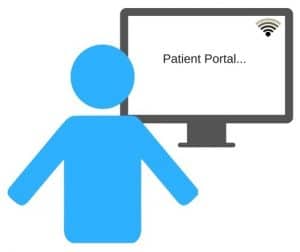
Currently, most portals allow patients to view test results, immunizations, and medical history. However, a recent review of patient attitudes toward patient portals found some negative experiences. According to the CDW Healthcare survey, less than 30% of patients would give their healthcare providers an “A” for technology use, and 89% want easier access to their portal. Patients are demanding a more user-friendly experience.
It pays to keep patients happy, and this year we hope to see more organizations take on a patient-centered approach to improve features, usability, and design.
Who is doing this well?
Geisinger Health System is a great example. In 2001, they launched “MyGeisinger,” an online portal, which has since then evolved into an essential tool between the organization and their patients.
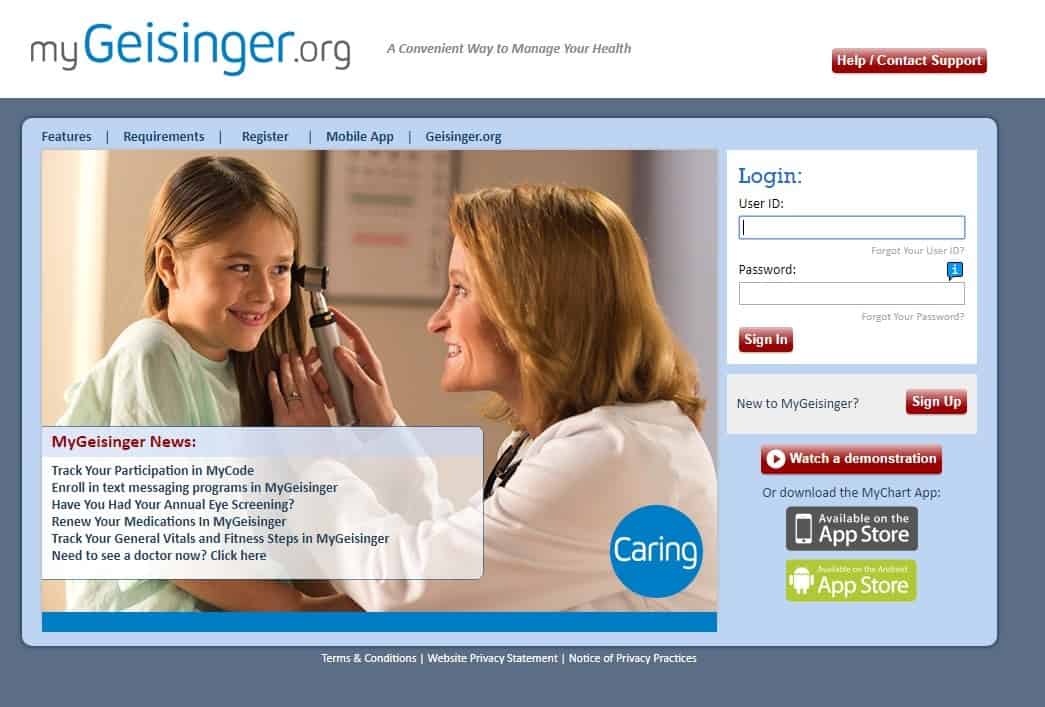
Image source: myGeisinger
MyGeisinger has many beneficial features that are helpful to patients. Apart from patients’ medical record and health summary, patients are also able to renew prescriptions, request appointments and ask for medical advice for non-urgent questions or concerns.
Today, around 40% of Geisinger’s active patient population are on MyGeisinger, with 20,000 logins per day. This has also resulted in fewer calls to the office.
** Tip: To create a user-friendly portal, start by building a survey to ask your patients about their preferences and requirements. The responses collected should then give you specific patient needs. Use this to start mapping out a design that will directly address those particular user requirements.
Over time, a portal should give patients more control over their care and well-being and become the foundation for electronic communications between the patient and provider.
2. Voice-driven SEO
Digital assistants such as Siri, Alexa, and Google Assistant are invading our lives through mobile devices, smartphones, and home devices.
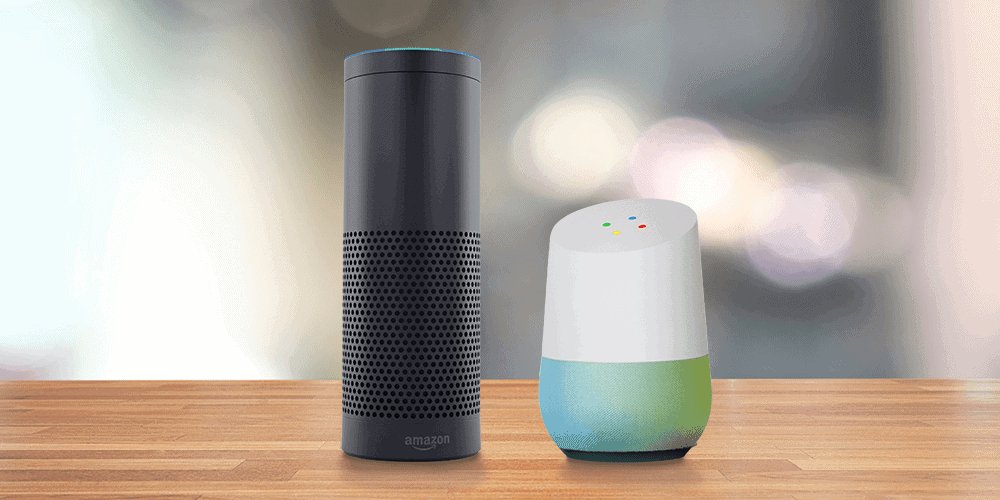
According to Md Connect, a staggering 200 billion searches per month will be done with voice! This is shown in the graph below. Voice search is already accounting for 20% of all searches and will make their way into the healthcare industry, with many projects underway.
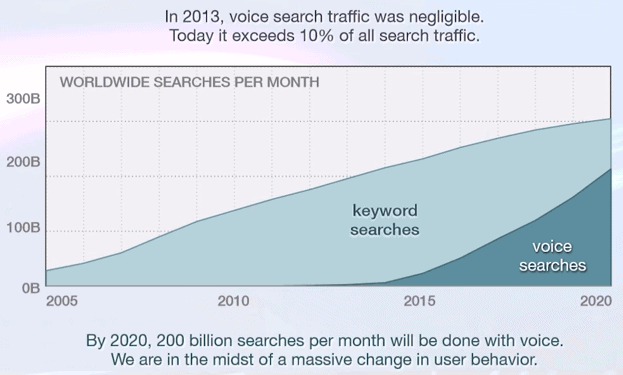
Source: Graph by MD Connect
With the rise of popularity of voice search continues to rise, medical marketers need to adapt their SEO strategies to stay ahead of the curve, with consideration to the following:
-
Focus on users’ language
When marketers are planning out their voice search strategy, often they forget that people search differently; unlike search keyword phrases that you type into your computer, voice search is more conversational and natural in tone. The graph below demonstrates how many words are used in text vs. speech.
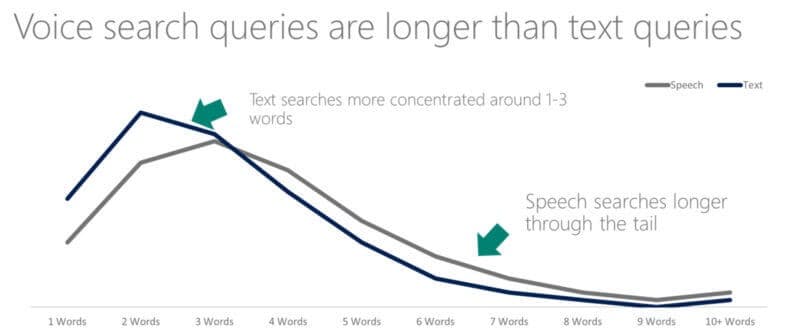
Source: Graph by Campaign
When users use text search, these are shorter than voice search. For example, in Google, a user may type “knee specialist, Lincoln.” However, the same query conducted via voice search might be “Who is the best knee specialist in Lincoln.”
Natural language is becoming more and more integrated into Google’s search algorithms. Because of this, marketers should focus their content on generalized topics rather than specific keywords as before.
** Tip: Start by thinking about the types of questions you get when patients call you on the phone, then document and record the exact words they used to get a better idea of what content to write.
-
Focus on local information
Patients often search for GPs and hospital information online based on their local area, therefore having your Google Business listing and Bing Places for Business claimed and up-to-date can help increase your chances of showing up when a voice search is done. Don’t also forget to update other online business directories!
Voice is inevitably going to play a larger and larger role in search results. Since most voice searches are done on mobile devices, your website must be mobile-friendly. It’s time for marketers to start optimizing their site for the new world of voice search.
3. Content
Content marketing has been a common digital strategy in the last few years, and once again, this shows no signs of slowing down. According to a survey by Smart Insights, 20% of marketers believe that content marketing will make the largest commercial impact this year.
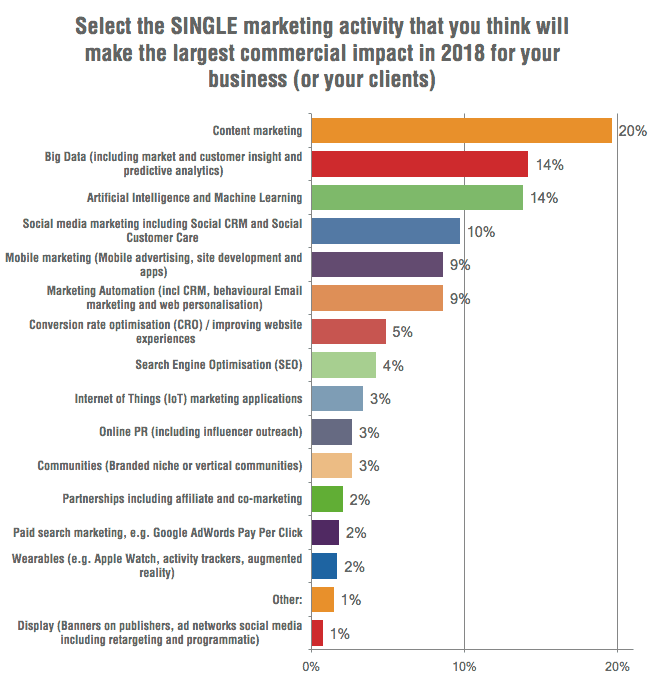
Source: Smart Insights
So why is content marketing still relevant?
Many studies have revealed that healthcare content is the second most-searched-for service online. With so many people seeking expert healthcare information, it is important to capture these searches with relevant and unique content.
Developing content that answers your patient’s questions and addresses their points is key to writing valuable content.
Example: If your goal is to improve appointments for your physiotherapy department, it’s a good idea to ask what a physio solution-seeker is searching for in a search engine. For many, it is signs of whether they need physiotherapy. As a marketer, you can create a simple on-site quiz that acts as a diagnostic tool for whether the person requires physiotherapy after answering a set of questions.
Once they have taken the quiz, the next stage is to prompt them to book an appointment. In this way, the prospect is self-qualifying themselves as someone who is need of an appointment with a physiotherapist.
Bupa, an international healthcare group, does content marketing very well. They run The Blue Room, an online destination that provides “information you can trust, and real stories to help inspire you to live a longer, healthier, happier life.”
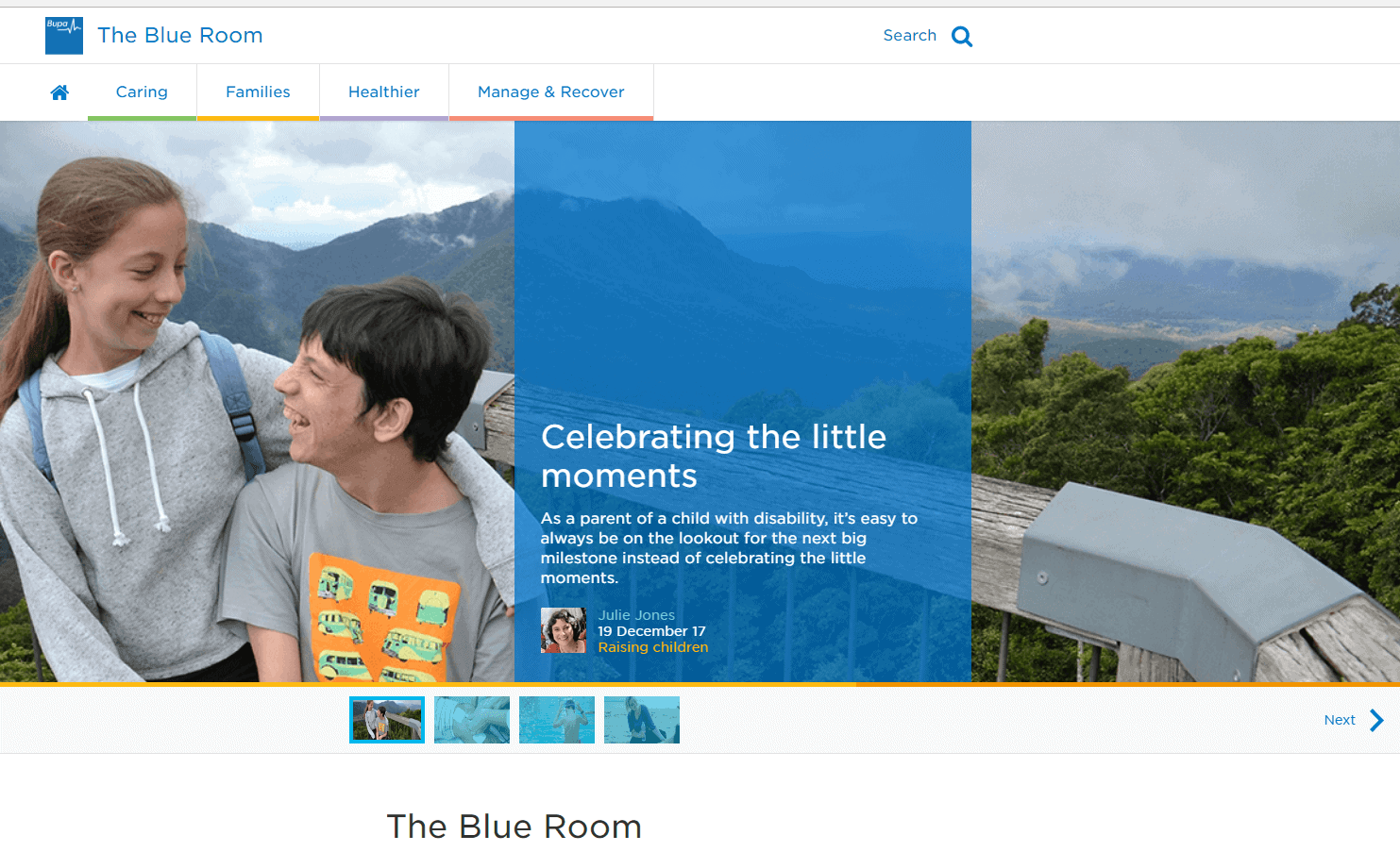
Source: Bupa
Whether it’s content that answers questions about treatment options or content that provides information about care, Bupa has created a content strategy that has helped with customers’ engagement, as well as driving commercial outcomes.
At the end of 2016 – a year and a half after its launch, the site achieved the following statistics:
- 5 million unique visitors
- four million visits
- five million page views
- a high level of returning visitors
- 17 million minutes people have spent in The Blue Room engaging with Bupa’s content
** Tip: As with any strategy that delivers results, the first thing to do is to set clear goals. What are the goals of your content – do you need to drive volume to a specific service? Are you trying to raise awareness? By having a set of clear goals, this makes it easier to align your content to make this relevant to users. Don’t forget the importance of landing pages when writing content to convert visitors to make a phone call, or book an appointment.
4. Social engagement
Social media marketing has changed significantly over the past decade. In the medical world, the trend in social media is being driven by changing attitudes and preferences. Patients now seek information via social media to help them make an informed decision on the best practice and doctors to seek care.
This year, we will see more engagement and two-way communication, as healthcare marketers are looking to communicate with patients in real-time, to build meaningful relationships with their target audience.
So what content should you have in place?
-
Video
Simply put, video works! Video is growing and will only get bigger in 2018 because people are visual by nature. According to Cisco, video traffic will be 82% of all consumer Internet traffic by 2021, up from 73% in 2016.
The graph below demonstrates the increase in video traffic, year by year.
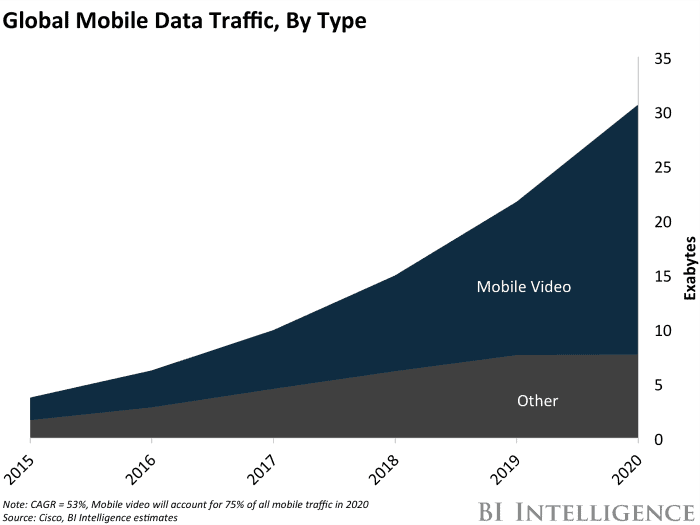
Source: Business Intelligence
Already, you can see how healthcare organizations are utilizing videos via social media. Everyday Health, an online provider of health resources, for example, takes advantage of this trend nicely in this video featuring “celebrity doctor,” Dr. Frank Lipman.

Testimonials shown in videos, also make a great way of building brand credibility and trust in the eyes of customers. Take this example from Nexon Group.
Remember that video content elicits higher engagement rates. New formats such as live streaming are also an effective way to engage target customers.
-
Chatbots
In 2017, we saw how many companies incorporated chatbots as part of their marketing strategy. Forbes writer, Blake Morgan comments that Chatbots are the future of customer experience and have the power to replace search windows and many apps in the not-so-distant future.

Chatbots can give medical practices the chance to interact quickly with their patients in a way that feels personal and specific to their needs. There are more than 100,000 active bots on Facebook Messenger every month, and almost 2 billion messages are exchanged between businesses and their target audiences each month.
Most healthcare organizations have done little to advance their client communication systems. Often, their best effort is to have a FAQ section on the website to cover any inquiries that a patient may have. This is very limiting, and patients are frustrated since they may not find the information they are looking for. Chatbots, on the other hand, are interactive, answers are obtained quickly and efficiently, further saving time taking phone calls! A combination of chatbots and messaging apps can significantly enhance the quality of patient service.
Bots like HealthTap has reinvented the way people all over the world take care of their health and well-being.

Image source: Internet Marketing Ninjas
HealthTap acts as a self-diagnosis tool and patients can quickly find out what they might be suffering from and how to treat it. If that’s not enough, they can submit their questions to more than 100,000 doctors by video or simply messaging them.
** Tip: Start by making your first chatbot simple, then gradually build on this as you test the waters. Building a complex chatbot can overcomplicate the process.
-
Be mindful of organic reach
Organic reach strategies in social media are likely to decline. Platforms such as Facebook has made this more difficult for firms to reach their fan base, their algorithms filter out all content and only show ones they believe are relevant to users. With Facebook already announcing that organic reach will soon be zero, businesses are more likely to pay to have their content seen by sponsored posts.
Healthcare marketers, therefore, need to stop relying on short-term tactics that once worked. 2018 is likely to be the year when we will feel the pinch on the organic reach of our social media content.
To show the decline in organic traffic, Social@Ogilvy conducted an analysis of 106 country-level brand pages and found that the average reach of organic posts had declined from 12.05% in October to 6.15% in February. For 23 pages in the sample with more than 500,000 likes, the drop was from 4.04% in October to 2.11% in February.
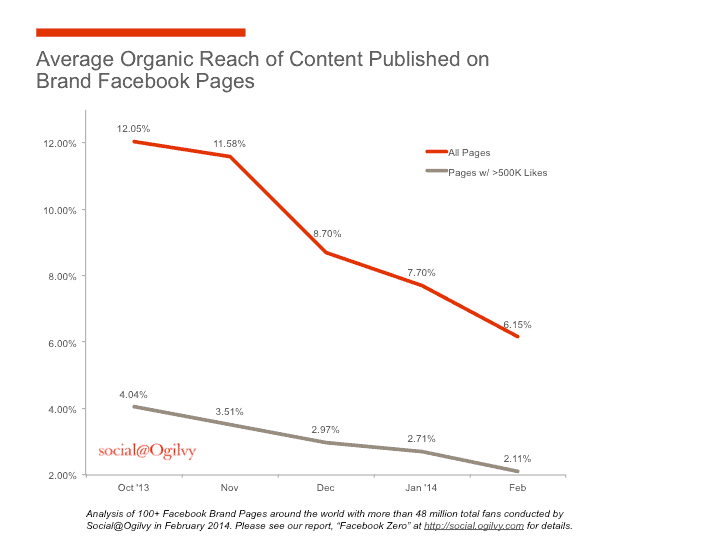
Source: AdAge
In short, while you must create and share relevant content, you need to understand that it is a pay-to-play world.
Social media cuts across every customer segment and every aspect of the customer relationship. So whether you’re planning to launch your medical practice on Twitter or Facebook, it is important that you are creating social communities to connect, collaborate and communicate with the target audience.
5. Optimize user experience
UX design has had yet another wonderful year and will continue in 2018. An attentive approach to user experience (UX) can lead to stronger relationships between healthcare providers and their audiences.
Why is UX still important to focus on in 2018?
We’re living in a time when design and user experience have never mattered more. According to continuing research by Klein & Partners, 11% of visitors to a hospital or health system say their website experience created new, negative feelings about that brand. Patients are increasingly comparing healthcare websites to the best retail sites such as Amazon and want to experience the same.
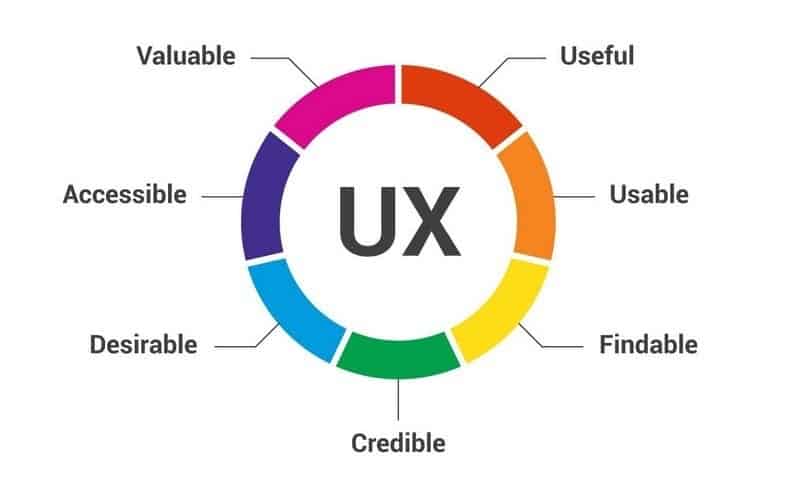
Source: Interaction Design
Design in healthcare is about usability and creating a better user experience for patients. Seven factors describe user experience, according to Peter Morville, these are:
- Useful
- Usable
- Findable
- Credible
- Desirable
- Accessible
- Valuable
Your website should, therefore, aim to satisfy the user experience first, through improved usability, enhancing customer satisfaction, and inspiring loyalty.
The increased use of electronic medical records has brought the topic of user experience into focus for the healthcare industry. For example, if you are building a website, then you have to take care of the accuracy of the information that you provide. A person’s medical records can be critical information while monitoring their health or detecting symptoms.
By adding value to things patients are already thinking about, you become a trusted source and a partner.
It is critical to look forward to 2018 and adjust to the healthcare marketing trends if you wish to stay competitive in the market. Modern healthcare marketing is about connecting people, and focusing more firmly on what customers want.
5 a: Using a marketing CRM build specifically for healthcare’s workflow
Marketing is only as effective as your ability to track your results to drive more leads and referrals to your practice. We highly recommend using a Healthcare Marketing CRM to track your most valuable relationships. Not only can you improve your visibility in your community, but you can track referral trends with competing providers.
Note companies like Salesforce.com do not cater specifically to healthcare and as such do not have products that can manage the entire life-cycle of the referral process.
Example: ReferralMD’s Marketing CRM
UPDATE FOR 2019 – check out our healthcare technology trends for 2019. Do you agree?
